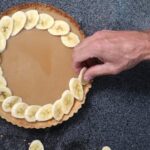Decorating a cake is an art form that not only adds beauty but also enhances its appeal for any occasion. However, as with any perishable item, the longevity of a decorated cake is a concern that cannot be ignored. How long will it last before it starts to deteriorate? In this article, we will delve into the factors that determine the shelf life of a decorated cake and explore tips and techniques to extend its lifespan.
Before we dive into specific preservation methods, it is crucial to understand the various factors that can affect the freshness of a decorated cake. The first factor is the importance of ingredients and their freshness. Using fresh and high-quality ingredients is key to not only achieving optimal taste but also extending the shelf life of your creation.
The recipe itself plays a significant role in determining how long a decorated cake will remain fresh. Different recipes have different levels of moisture content and stability. Moisture affects how well the cake holds up over time, while stability ensures that it retains its shape despite external conditions. Additionally, the type of decorations used on the cake also impacts its longevity. Delicate decorations might not withstand extended periods or certain environmental factors.
In the following sections, we will explore common types of decorations and their corresponding lifespans, how choosing the right flavors can enhance a cake’s shelf life, proper storage techniques for maintaining freshness, professional methods for extending longevity, signs of spoilage to watch out for, and helpful tips for preserving leftover cakes.
By understanding these aspects and implementing proper techniques, you can enjoy your beautifully decorated cake for longer while ensuring its delightful freshness remains intact. Let’s embark on this journey to unravel the secrets behind maximizing the shelf life of your delectable creations.
Factors that Determine the Longevity of a Decorated Cake
The longevity of a decorated cake is influenced by various factors that contribute to its shelf life. Understanding these factors can help bakers and consumers ensure that their cakes last as long as possible while maintaining their freshness and quality.
Importance of ingredients and their freshness
The quality and freshness of the ingredients used in a decorated cake play a significant role in determining its longevity. Using fresh, high-quality ingredients will not only enhance the taste but also contribute to a longer shelf life. Ingredients such as eggs, milk, butter, and flour should be within their expiration date and stored properly before use.
Impact of the cake’s recipe on its shelf life
Different cake recipes have varying shelf lives due to variations in moisture content, acidity level, and fat content. For example, moist cakes with higher fat content tend to have shorter shelf lives compared to drier cakes with less fat. It is essential for bakers to choose recipes that align with their desired longevity for the decorated cake.
Role of the decorations and their durability
The durability of the decorations on a cake also affects its longevity. Certain types of decorations might be more prone to deterioration or melting over time, shortening the overall lifespan of the cake. Delicate sugar flowers or elaborate fondant designs may need extra care when storing and handling to prevent damage.
By considering these factors that determine the longevity of a decorated cake, bakers can make informed decisions about ingredient selection, recipe choice, and decoration techniques. This knowledge will help ensure that cakes stay fresh and visually appealing for an extended period, allowing for maximum enjoyment by both bakers and consumers alike.
Common Types of Decorations and their Longevity
Decorations play a crucial role in the overall design and appeal of a decorated cake. However, it is important to understand the longevity of different types of decorations to ensure that your cake looks its best for as long as possible. In this section, we will explore common types of decorations and their expected lifespan.
One popular type of decoration is fondant, which is a smooth and pliable icing that can be rolled out and draped over the cake. Fondant is known for its durability and can stay intact for an extended period if stored properly.
It is recommended to store fondant-decorated cakes in a cool, dry place away from direct sunlight to prevent fading or melting. Additionally, it is advisable to avoid refrigerating fondant as the moisture can cause it to become sticky or lose its shape.
Buttercream is another frequently used decoration that adds a delicious creamy texture to cakes. While buttercream can hold up well in moderate temperature conditions, it is important to note that extreme heat or humidity can cause it to melt or become unstable. To prolong the longevity of buttercream decorations, store the cake in a cool environment and avoid direct exposure to sunlight.
Edible prints are becoming increasingly popular for adding intricate designs and personalized images onto cakes. The longevity of edible prints largely depends on the quality of the printing process and how well they adhere to the cake’s surface. Generally, these prints can last for several days without any significant fading or distortion if stored correctly. To preserve edible prints, keep the cake in a cool place with limited exposure to air and moisture.
Gumpaste flowers are delicate and lifelike decorations commonly used for special occasions such as weddings or anniversaries. These meticulously handcrafted flowers have impressive longevity due to their sugar-based composition. When stored correctly in an airtight container at room temperature, gumpaste flowers can last for months or even years as beautiful keepsakes.
By understanding the expected lifespan of different types of decorations, you can choose the most appropriate style for your cake and ensure that it continues to look stunning for as long as possible. Remember to consider factors such as storage conditions, exposure to moisture or heat, and the delicacy of the decoration when determining how long it will last.
Choosing the Right Flavors for Longevity
When it comes to the shelf life of a decorated cake, the choice of flavors plays a significant role. Certain flavor combinations can enhance the cake’s longevity, while others may have an adverse effect. It is crucial to consider the impact of moist ingredients and how certain flavors may affect the preservation of decorations.
Moist ingredients like fruits or fillings can shorten the shelf life of a decorated cake. While these ingredients add delicious flavors and textures, they also introduce moisture that can speed up the spoilage process. If you plan to use moist ingredients, it is essential to consume the cake within a shorter period or take extra precautions to prolong its freshness.
On the other hand, some flavors are known for their ability to extend a cake’s lifespan. For example, alcohol-infused cakes tend to have a longer shelf life due to their high alcohol content which acts as a preservative. Other commonly used flavors with preservative properties include lemon zest, vanilla extract, and almond extract.
The choice of flavors also has an impact on the preservation of decorations. Some flavors, such as citrus-based ones, can cause edible prints or fondant decorations to fade or lose their vibrant colors over time. Therefore, it is crucial to consider these factors when planning your decorated cake to ensure both its taste and visual appeal are preserved.
| Flavor Combinations | Effects on Shelf Life |
|---|---|
| Alcohol-infused | Prolongs shelf life |
| Lemon zest | Prolongs shelf life |
| Vanilla extract | Prolongs shelf life |
| Almond extract | Prolongs shelf life |
| Citrus-based | Fades or distorts decorations |
Storing a Decorated Cake for Maximum Freshness
When it comes to maintaining the freshness of a decorated cake, proper storage is crucial. This section will discuss the best practices for storing a decorated cake to ensure its maximum freshness and longevity.
Refrigeration vs. room temperature: Which is better?
The decision between refrigeration and room temperature storage depends on the type of cake and its ingredients. In general, refrigeration is recommended for cakes with perishable fillings or toppings such as cream or custard. These ingredients have a higher risk of spoiling if left at room temperature for an extended period. Placing the cake in an airtight container or wrapping it tightly with plastic wrap will help prevent it from drying out in the refrigerator.
On the other hand, cakes with non-perishable fillings or decorations can be stored at room temperature. This is especially true for buttercream-frosted cakes or those with fondant decorations. Refrigerating these types of cakes can cause condensation, which can lead to softening of the frosting or distortion of fondant designs.
Properly covering the cake to maintain freshness
To maintain the freshness and quality of a decorated cake, it is important to cover it properly during storage. Regardless of whether you choose refrigeration or room temperature storage, here are some tips on how to cover a decorated cake:
- Use an airtight container: Place the cake in a container that seals completely, preventing air from getting in and moisture from escaping.
- Wrap in plastic wrap: If you don’t have an adequately sized container, wrap the entire cake tightly with multiple layers of plastic wrap.
- Avoid direct contact between decorations and wrap: If your cake has delicate decorations like gumpaste flowers, place small pieces of parchment paper or wax paper between them and the plastic wrap to avoid smudging or damaging them.
Tips for preventing the cake from drying out
Regardless of how you store your decorated cake, there are some additional steps you can take to prevent it from drying out:
- Add moisture: Place a slice of white bread or a damp paper towel in the container with the cake to help retain moisture.
- Refresh frosting: If the cake has been refrigerated and you notice the buttercream frosting has dried a bit, use a bench scraper or an offset spatula dipped in hot water to go over the surface of the frosting gently. This will help smooth out any cracks and restore some moisture.
- Avoid excessive exposure: Limit the amount of time the cake spends outside its storage container while decorating or serving. The longer it is exposed to air, the more likely it is to dry out.
By following these guidelines for storing a decorated cake, you can prolong its freshness and enjoy it at its best for as long as possible.
Extending the Shelf Life with Professional Techniques
Using food-grade additives to prolong the cake’s freshness
One way to extend the shelf life of a decorated cake is by utilizing food-grade additives. These additives can help preserve the moisture and texture of the cake, allowing it to stay fresh for a longer period of time. Common additives include ingredients like glycerin, honey, and corn syrup, which help retain moisture in the cake. These additives can be incorporated into the batter or used as a brushing liquid on the cake layers before decorating.
Additionally, some bakers choose to use stabilizers such as gelatin or agar-agar in their recipes. These substances work by enhancing the structural integrity of the cake, preventing it from collapsing or becoming too dense over time. However, it’s important for bakers to use these additives in moderate amounts and follow proper instructions to avoid altering the taste or texture of the cake.
The potential impact of commercial preservatives on taste and quality
While commercial preservatives may offer an extended shelf life for decorated cakes, they can also have an impact on taste and quality. Many consumers prefer cakes made with natural ingredients and are hesitant when artificial preservatives are involved. It’s crucial for bakers to strike a balance between preserving freshness and maintaining a delicious flavor profile.
To achieve this balance, some professional bakers opt for natural preservation methods instead of relying on synthetic preservatives. For instance, they may utilize citrus zest, spices like cinnamon or cloves, or even alcohol-based extracts such as vanilla or almond extract. These natural ingredients not only add flavor but also possess antimicrobial properties that can help inhibit bacterial growth and extend the shelf life of a decorated cake without compromising taste.
Professional methods for preserving cake designs
Preserving intricate decorations is an essential aspect of extending the shelf life of a decorated cake. Professional bakers employ various techniques to ensure that delicate designs remain intact and visually appealing. One method is to use a protective coating, such as a thin layer of food-safe varnish or edible lacquer, over the decorations. This helps to seal and shield the designs from air, humidity, and potential damage.
Another preservation technique is employing an edible glaze or spray on the cake’s surface. This creates a barrier that prevents moisture loss and keeps the decorations from drying out. Additionally, professional bakers may choose to refrigerate or freeze the decorated cake before it is served or delivered. This cold storage method can slow down any potential deterioration of the designs and help maintain their quality for a longer period.
By utilizing these professional techniques, bakers can not only extend the shelf life of a decorated cake but also ensure that it remains visually stunning and delightful until it is enjoyed by the intended recipients.
Signing of Spoilage and When to Discard a Decorated Cake
When it comes to enjoying a decorated cake, it’s important to know the signs of spoilage in order to ensure its freshness and safety. Mold, off odors, and changes in texture and appearance are all indicators that a cake may no longer be suitable for consumption. Understanding these signs is crucial for maintaining not only the taste but also the quality of your cake.
One of the most obvious signs of spoilage is mold growth on the cake. Mold is typically visible as fuzzy or furry patches that appear on the surface or between layers. It can range in color from white and green to blue and black, depending on the type of mold. If you see any signs of mold, it’s best to discard the entire cake to avoid any potential health risks.
Another indicator of spoilage is off odors or strange smells coming from the cake. A fresh cake should have a pleasant aroma that matches its flavor. If you notice any unpleasant or sour smells, it could be a sign that bacteria or other microorganisms have begun to grow on the cake. In this case, it’s safest to err on the side of caution and dispose of the cake.
Changes in texture and appearance can also indicate spoilage. For example, if a previously soft and moist cake becomes dry and crumbly, it may no longer be fresh or safe to eat. Similarly, if you notice discolored spots, excessive sweating (condensation), or an overall unappealing appearance, it’s best not to consume the cake.
It’s important to note that certain types of decorations may impact how quickly a cake spoils. For example, if your cake has perishable fillings or toppings such as fresh fruit or cream-based decorations like whipped cream or mousse, it will have a shorter shelf life compared to cakes with non-perishable decorations like fondant or gumpaste flowers. Make sure to consider these factors when deciding how long to keep and consume a decorated cake.
To ensure the safe consumption of a decorated cake, it’s recommended to store it properly and follow safe food handling practices. If you’re unsure about the freshness or safety of a cake, it’s always best to consult with a professional baker or pastry chef who can provide guidance based on their expertise and knowledge.
| Signs of Spoilage | Actions to Take |
|---|---|
| Mold growth | Discard the entire cake |
| Off odors or strange smells | Dispose of the cake |
| Changes in texture (e.g., dry and crumbly) | Avoid consuming the cake |
| Unappealing appearance (e.g., discoloration, excessive sweating) | Do not consume the cake |
Tips for Extending the Lifespan of a Decorated Cake
When it comes to enjoying a decorated cake for as long as possible, there are several tips and tricks you can follow to extend its lifespan. First and foremost, proper storage is key.
Once the cake has been cut, make sure to cover the exposed areas tightly with plastic wrap or aluminum foil to prevent it from drying out. Additionally, storing the cake in a cool and dry place, away from direct sunlight and extreme temperatures, will help maintain its freshness.
Another way to extend the lifespan of a decorated cake is by using food-grade additives. These additives can be mixed into the batter or frosting to enhance the cake’s shelf life. For example, adding a small amount of vinegar or lemon juice to the batter can help prevent spoilage by creating an acidic environment that inhibits bacterial growth. Similarly, incorporating corn syrup into buttercream frosting can add moisture and improve its longevity.
It’s important to note that while commercial preservatives are available for extending the shelf life of cakes, they may affect taste and quality. It’s always best to consult with a professional baker before using such additives.
Alternatively, if you’re looking for professional methods for preserving your cake design without compromising on taste or quality, consider reaching out to a bakery specializing in custom cakes. They can provide expert advice on preserving cake designs using techniques such as sealing cakes with edible glaze or applying protective coatings.
By following these tips and tricks for extending the lifespan of a decorated cake, you can enjoy your creation for longer while preserving its delightful freshness. Whether it’s proper storage techniques, using food-grade additives, or seeking professional preservation methods, taking these steps ensures that you can savor every bite of your masterpiece without worrying about spoilage or deterioration.
Conclusion
In conclusion, understanding the shelf life of a decorated cake is essential for maximizing its freshness and enjoyment. By considering factors such as the ingredients, recipe, decorations, and flavors, you can ensure that your cake remains intact and delicious for as long as possible. Storing the cake properly, either in the refrigerator or at room temperature, and covering it adequately will also help in maintaining its freshness.
To extend the shelf life of your cake further, you may consider using food-grade additives or professional preservation techniques. However, it’s crucial to be mindful of the potential impact these methods may have on taste and quality. Additionally, being aware of the signs of spoilage such as mold or off odors is necessary to prevent any potential health risks.
Lastly, it’s important to enjoy your decorated cake while being mindful of safe consumption practices. Discard any cakes with perishable fillings or toppings after their recommended time frame to avoid any adverse effects. By following these guidelines and implementing tips for extending the lifespan of your decorated cake, you can enjoy every bite while preserving its delightful freshness.
Frequently Asked Questions
How far in advance can I decorate a cake?
The ideal timing for decorating a cake depends on a few factors. If you are using buttercream or cream cheese frosting, it is recommended to decorate the cake the same day you plan to serve it or the night before at most. This will help maintain the best texture and freshness of the frosting.
On the other hand, if you are using fondant or gum paste decorations, these can typically be made ahead of time and stored separately until ready to use. It’s important to note that some cakes may require certain elements to be added closer to serving time, such as fresh fruit or whipped cream, so it’s always good practice to check specific recipes or consult with a professional if unsure.
Do decorated cakes need to be refrigerated?
Yes, refrigeration is often necessary for decorated cakes depending on their specific ingredients and fillings. Cakes that contain perishable items like custard fillings, cream cheese frosting, or fresh fruit should definitely be refrigerated due to food safety concerns. The cool temperatures in a refrigerator slow down bacterial growth and help maintain the freshness of these ingredients.
However, not all cakes need refrigeration – those made with buttercream frosting or dry decorations can generally be kept at room temperature for a couple of days without any issues. It’s crucial to assess each cake individually and take into consideration the climate conditions in order to make an informed decision about refrigeration needs.
How do you keep a decorated cake fresh?
To keep a decorated cake fresh, there are several steps you can take. Firstly, proper storage plays a significant role in prolonging its freshness. If the cake doesn’t need refrigeration, find a cool spot away from direct sunlight and cover it well with plastic wrap or place it in an airtight container. This helps prevent drying out and protects against odors from affecting its taste.
When dealing with perishable fillings or frostings that require refrigeration, transferring the cake into an appropriately-sized covered container is critical for maintaining moisture levels and preventing absorption of other flavors from the refrigerator. Additionally, avoiding exposure to humidity is important to preserve its texture, so be cautious when refrigerating or storing in humid environments. Lastly, if making a layered cake with perishable components, it’s best to assemble and decorate as close to serving time as possible to ensure maximum freshness.

Welcome to my blog about home and family. This blog is a place where I will share my thoughts, ideas, and experiences related to these important topics. I am a stay-at-home mom with two young children. I hope you enjoy reading it! and may find some helpful tips and ideas that will make your home and family life even better!





